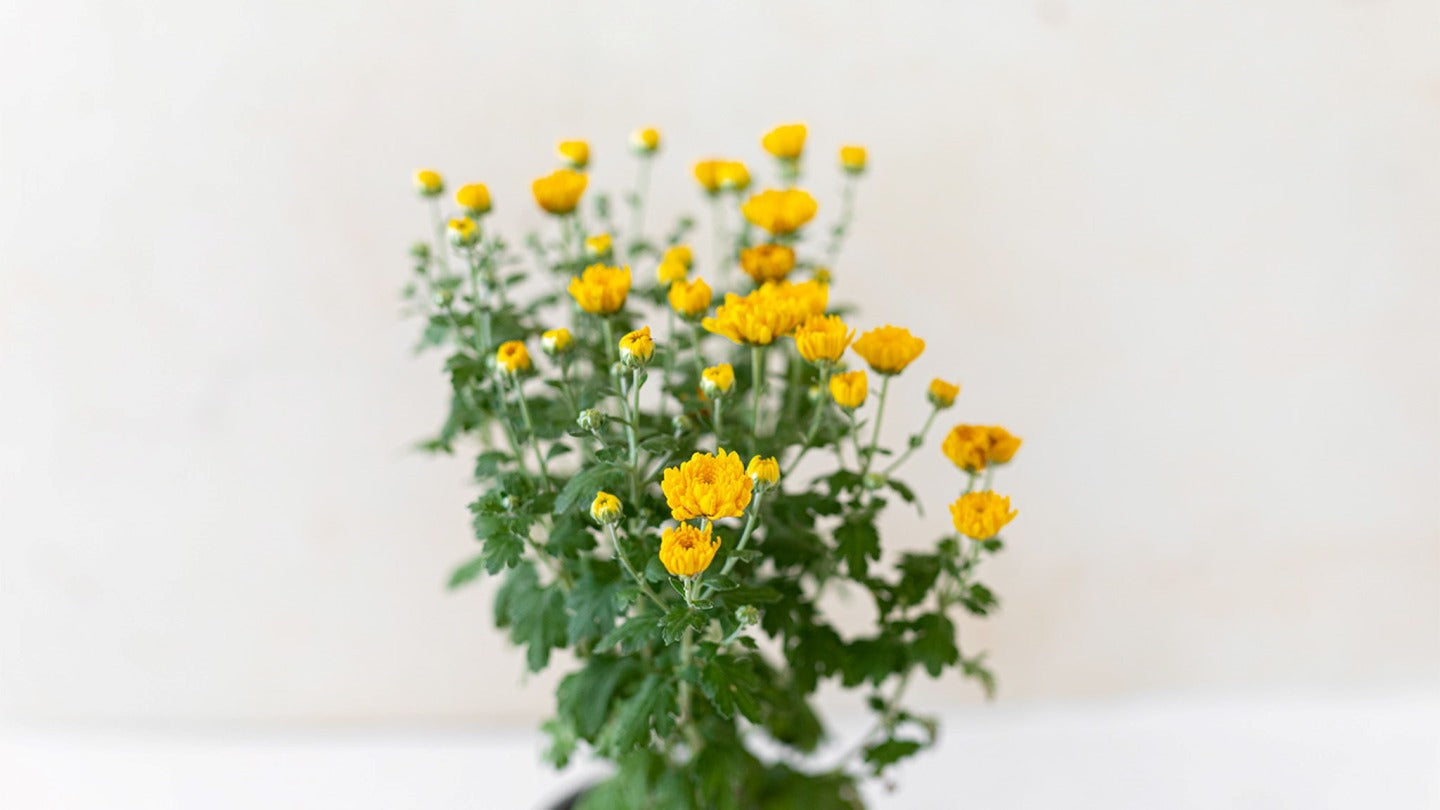cybloom
Chrysanthema Red/Yellow
Regular price
€3,90 EUR
Regular price
Sale price
€3,90 EUR
Unit price
per
Tax included.
Couldn't load pickup availability
Family: Asteraceae
Origin: Asia and northeastern Europe
The Size: They can quickly reach up to 3 feet in height.
Growth: You can always grow mums as annuals. They do provide wonderful fall colors and work great at filling in empty spots where summer bloomers have faded
Temperature: As one of their nicknames "hardy mums" suggests, they can handle cool temperatures. Mums can overwinter in the ground, and they do so even better in the warmer climates
Temperature: As one of their nicknames "hardy mums" suggests, they can handle cool temperatures. Mums can overwinter in the ground, and they do so even better in the warmer climates
Humidity: Heat delay can cause irregularly formed flower buds, erratic flowering, deformation of the plant’s crown, and other developmental issues. To bypass this problem in hotter climates, look for cultivars with higher heat tolerance.
Lightning: Chrysanthemum flowers are "photoperiodic" which means they bloom in response to the shorter days and longer nights experienced (in the Northern Hemisphere) in fall. Therefore, do not plant chrysanthemum flowers near street lights or night lights
The Soil: All mums prefer fertile, well-drained soil, with lots of organic matter or compost worked in. They like a soil pH slightly on the acidic side.
Watering: Water the plant when the top 1 inch of soil feels dry. If watering in a pot, water the soil surface using a watering can until moisture begins to drain from the bottom of the pot.
Fertilizer: It is crucial to feed chrysanthemums during their vegetative phase. Use a 20-10-20 fertilizer when planting and during the vegetative growth period.
Transfer: Most mums are completely root-bound when you get them. The roots have taken up the entire pot, which makes it really hard for the soil to retain any water. To repot, choose a container that is a little bigger than the last container. Fill the bottom of the new pot with good quality potting soil. Break up any roots you can, but do not damage the roots.
Features of Care: Planting these specimens in the garden in late summer or early fall does not guarantee sufficient time for the plants to become established. This is not a problem in warmer climates, where a bit of deadheading will satisfy most mums after bloom, but in areas with sub-zero winters, perennial plants need strong roots to anchor them into the ground.




